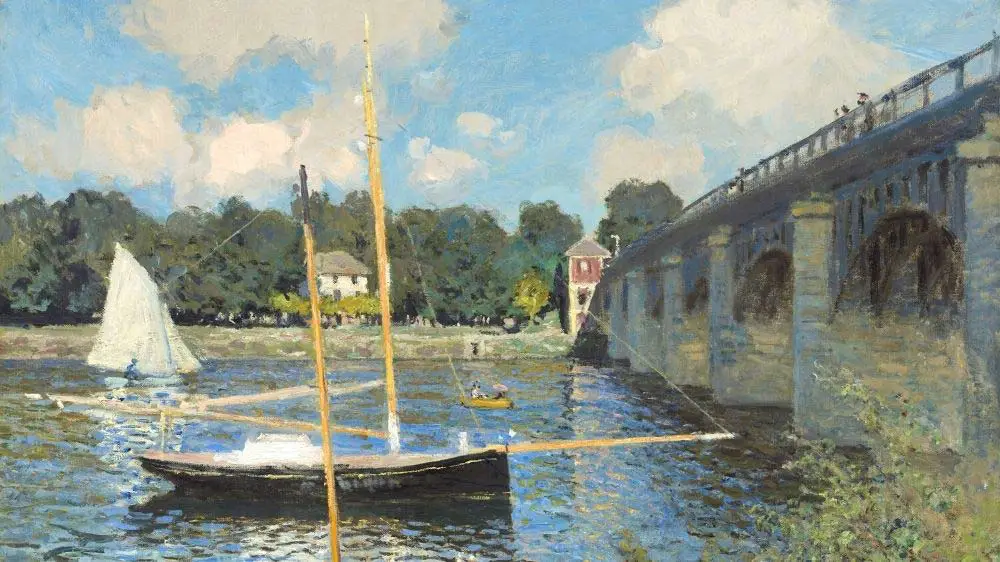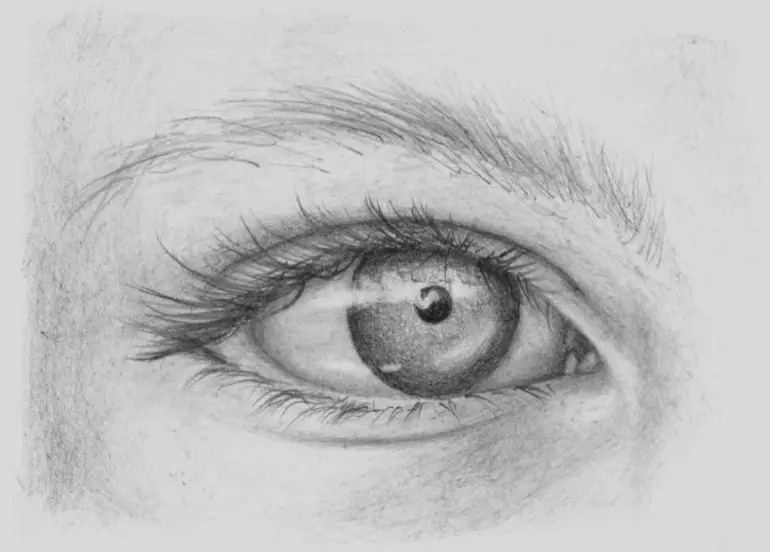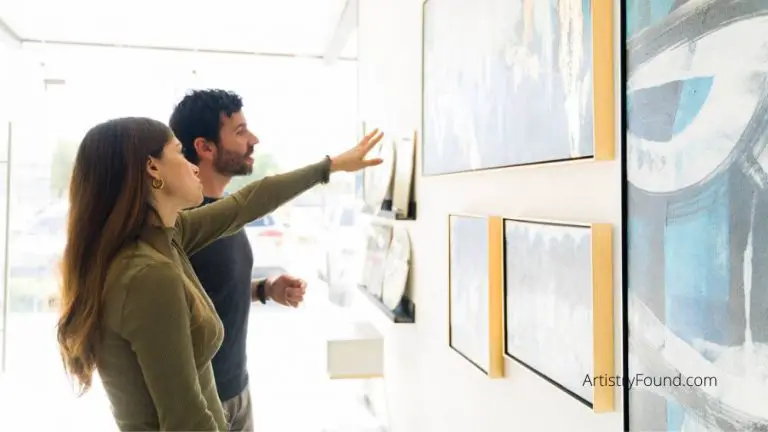Do Unsigned Paintings Have Any Value? (Explained!)
Leonardo Da Vinci is widely accepted as one of the most talented and successful painters of all time. But it may surprise you that one of his most famous paintings, the Mona Lisa, was never signed or dated. So, can unsigned paintings be valuable?
Unsigned paintings can indeed be valuable. Because it is common for an artist’s work of art to gain substantially in value after their death, a signature is not always necessary for the painting to have value. If the work can be authenticated, a painting will be valued primarily based on its artist.
Despite its lack of official signature, the Guinness Book of World Records credits the Mona Lisa as “having the highest insurance value ever for a painting in history.” Read on to learn more about what makes paintings valuable and how value is attributed to an unsigned painting.

(This article may contain affiliate links and I may earn a commission if you make a purchase)
Potentially Valuable Paintings Without A Signature? No Problem!
When an original painting has a pedigree or can be traced back to the creator, it makes the owner’s or analyst’s job infinitely easier. The lack of a artist’s signature does not necessarily decrease a painting’s value, but finding the artist will definitely increase its value. Museums and appraisers need to be able to find the painting’s origin and gauge the work’s authenticity.
If a painting is suspected to be from a known artist, there are several ways to research and uncover the origin of the art. Unfortunately, some of these methods can be difficult, very time-consuming, and expensive.
The commonly used methods for sourcing the origins of an original artwork include:
- Tracking down paperwork
- Checking a catalogue raisonné
- Performing lab tests
Proving A Paintings Value With Paperwork
Art sales are usually recorded throughout the course of history for this very reason, and finding the paperwork to prove ownership is an excellent and inexpensive way to determine where the piece comes from. Receipts are not a new concept, but they will prove useful for the determination of the artwork’s history.
Finding the history of a painting can be as easy as looking at the back of the piece. Wealthy and prominent art collectors would usually put their name on the back of the painting to prove their ownership and help record the piece’s history.
Suppose the current owner of the painting can prove that a significant person also previously owned the art. If the work was also painted by a famous artist, this is all the better for the work’s value! Documentation is the key to making a valuation easy for the owner and appraiser. When that option is not readily available, there are other methods to use.
Check The Artists Catalogue Raisonné
There is a resource called a catalogue raisonné, or critical catalogue, for prominent artists. A catalogue raisonné contains a complete list of all the known works of an artist. This list also describes various aspects of the painting and provides comprehensive, critical information in print or online on the Catalogue Raisonné Database.
A catalogue raisonné could include information such as:
- The medium the artist used to paint, such as oil or watercolor
- The name of the piece
- Size and/or measurements of the painting
- Condition of the work, or if it has been restored
- Date range that the art was created
- Description of the painting, assessments, and any literature that discusses the original art in greater depth
- Provenance and current owner/location
All these factors and more make the catalogue raisonné a wonderfully quick and easy resource for anyone wanting to evaluate a particular work of art.
Using Lab Testing To Validate A Painting
Today, there is so much modern technology at the fingertips of art appraisers. After considering provenance research, art investigators will break out the magnifying glass and even microscope to determine a painting’s origin. This helps the lab see all the layers of paint and determine when and if any paint was added later.
Next, the art investigators will use something called mass spectrometry to determine the types of pigment found in a particular piece. By analyzing certain materials in the paint, labs are able to determine the approximate date of origin for the art.
This pigment analysis helps prove the legitimacy of a piece. Suppose one was to question the legitimacy of the Mona Lisa due to its lack of signature. In that case, they could dissect the paint ingredients and confirm whether they contain lead from the early 1500s or ingredients that were not available until the 1900s.
Using X-Rays to Discover Underlying Images
X-ray studies can also determine if an earlier painting exists underneath the artwork in question. This, along with infrared reflectography, can help lab scientists know what lies underneath the painting’s visual portion and peer beneath the surface to discover other details.
Many artists will sketch out their work with charcoal or pencil and then paint over the underdrawings. If what is under the visible paint portion does not match up with the suspected artist’s known preparation methods, labs can essentially rule out the work as an authentic piece.
What Makes a Painting Valuable?
Paintings have been known to slip through the cracks over time and wind up in some attic or tucked away in a storage room for decades, if not centuries. An artist’s signature, title, and date on a painting are certainly helpful to an art dealer when evaluating a piece, but these are not the only things appraisers will use.
Museums often check if the painter is already well known, but if an unknown artist lived an interesting life or had something unusual happen to them, their art could increase in value. Other times the art becomes more valuable merely based on who previously owned the painting.
A simple lesson in supply and demand explains why an artist’s work will become more valuable after their death. However, the fact that a painter may not have seen success while alive can feed into why unsigned work can become more valuable later on. What might have been a quick sketch from a nobody can quickly appraise for millions after their death.
Subject Matter of Valuable Paintings
People particularly like images that make them feel something. While this is largely subjective, here are a few of the most commonly successful subjects of painters:
- Famous figures or leaders, especially religious or spiritual leaders
- Beautiful women
- Serene or traditional landscapes
- Day-in-the-life paintings, or works that depict the typical lifestyle of a class of people or time period
- Abstract or impressionistic scenes
- Figure studies and nude figures
Even the color scheme and size play a role in how much a particular painting is worth. If a picture draws the eyes in with a bright color, or because the scene is large enough to command the room, the odds are high that the work will appraise a lot higher. Many factors have to be assessed when considering the value of a painting.
What Decreases the Value of a Painting?
If a painting is obviously stained or damaged in any way, the portrait’s future owner would potentially have to pay to have it restored, which will ultimately decrease its value. The same applies if the paint has faded or cracked, as most potential buyers will want to be able to display the work immediately after buying.
However, many art collectors will only consider a painting if it has not been restored or retouched in any way. If a painting is to be retouched to preserve or restore certain aspects of a painting, the quality of the restoration will inevitably affect the overall value of the work.
Typically, the better the condition of the piece, the higher the price. But, strong chemicals could potentially damage the integrity of these treasures. A professional art restorer needs to consider the structure, appearance, and condition of the work to guarantee a successful restoration job.
A sketch done on a piece of paper is not typically as valuable as an oil painting on canvas. Even the painting’s material can play a role. The subject matter can be tricky for an appraiser. With the exception of paintings by really famous artists who could paint a potato that would sell for a million dollars, most people want to buy good conversation pieces.
Conclusion
Having a painting authentically signed by a particular artist certainly can help assessors with the process of determination. However, lab testing, receipts and documentation, a catalogue raisonné, and other resources play a larger role in determining a painting’s value and authenticity.
There are so many aspects to consider when ascertaining the value of a painting, but in reality, a signature has very little to do with the process. A famous signature does not always make a painting valuable, and a lack of a signature does not always decrease the value.
More From Artistry Found:
- 7 Reasons Why You Should Buy Art From Living Artists
- Can You Sell a Painting of a Celebrity? (Explained!)
- Should I Sell My Original Paintings Or Just Prints? (Explained!)
- Do Flower Paintings Actually Sell? (You May Be Surprised!)
Sources:
Guinness World Records – Highest insurance
New York Public Library – Catalogue raisonné








